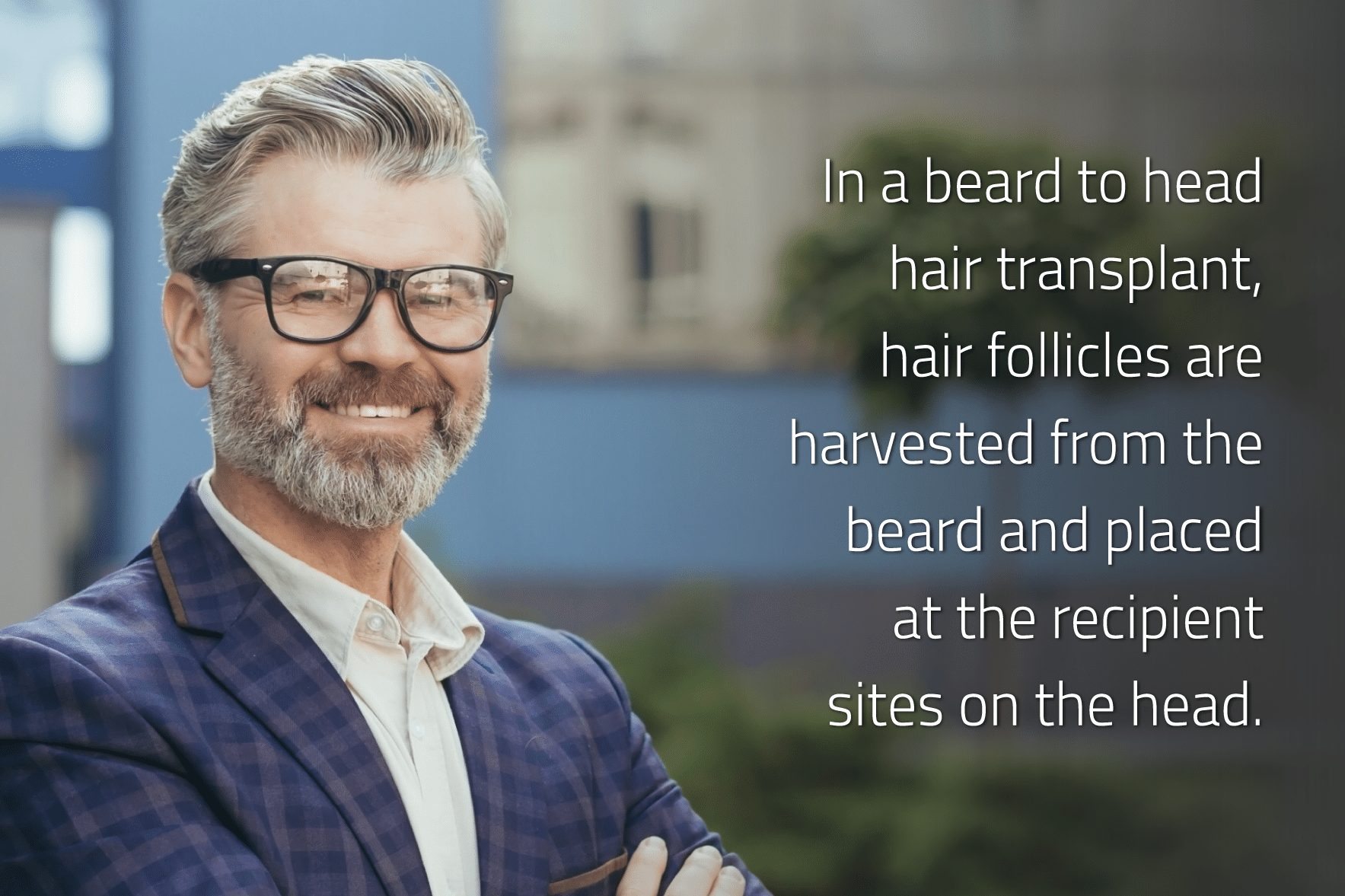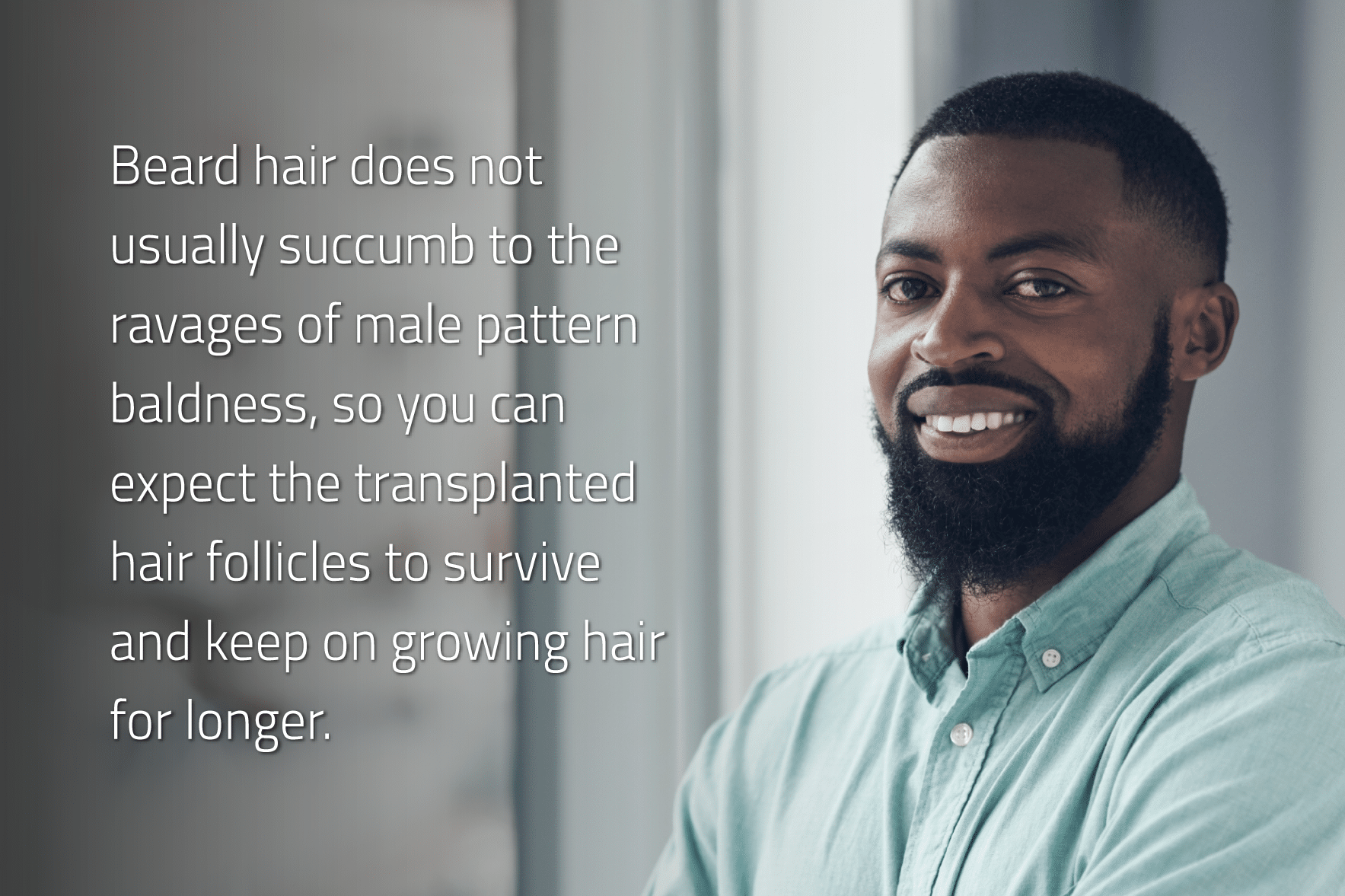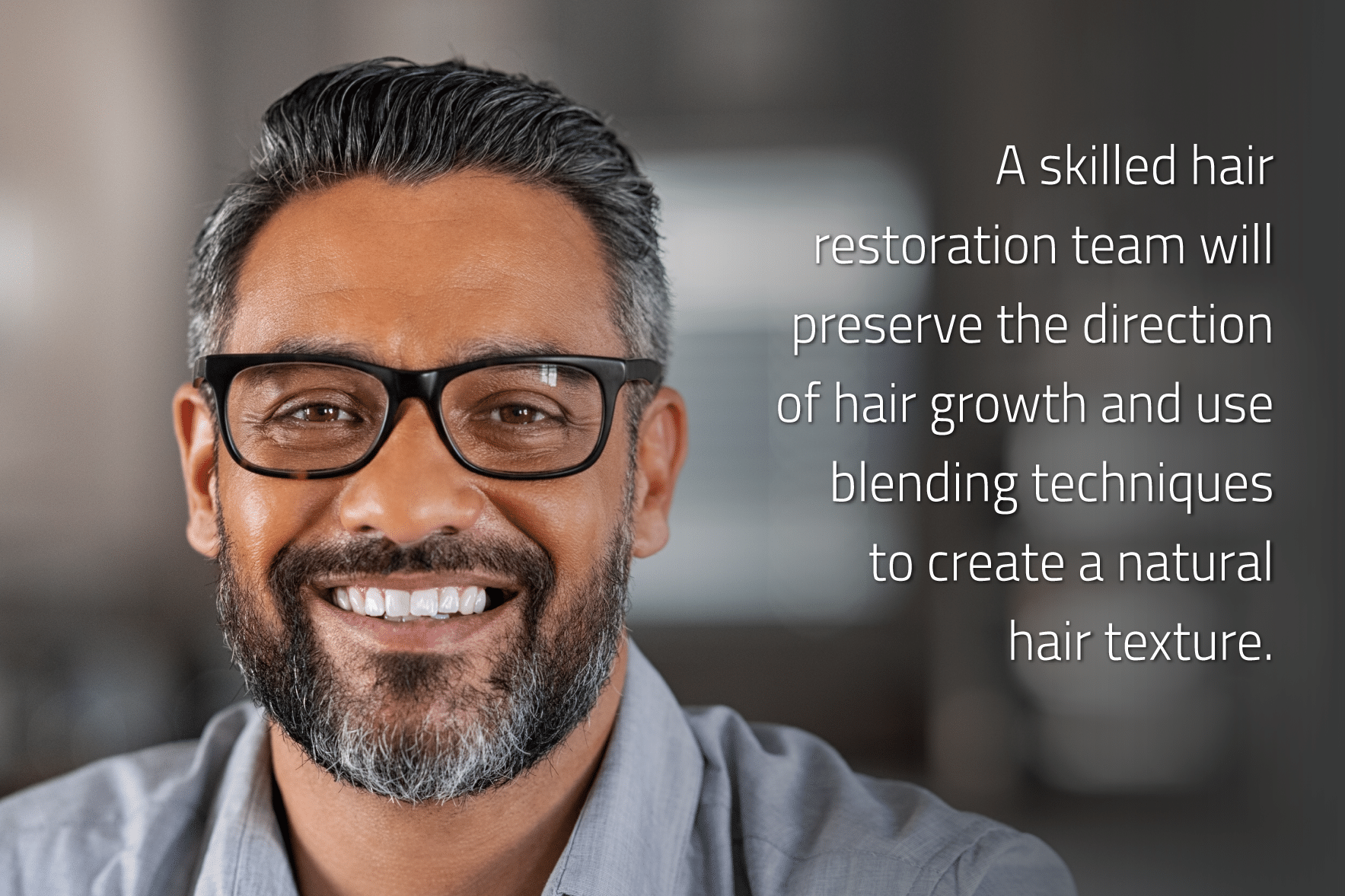Here at North Atlanta Hair Restoration, we see patients at many different stages of hair loss.
While some patients come to us when they’re just beginning to experience hairline recession — and while they still have quite a few hair preservation and hair restoration options – many don’t show up until they’re in the later stages of hair loss.
The challenge for those facing more advanced hair loss, including some who have had hair transplant procedures in the past, is the lack of good donor sites from which healthy hair follicles can be harvested.
The Importance of Good Donor Hair Sites for Transplantation
A good donor site for hair transplantation needs to be densely populated with lots of healthy hair follicles.
Ideally, the donor site should be full of thriving individual hairs that are thick enough in diameter to effectively fill in thinning areas elsewhere.
Also, there needs to be a high number of follicles per square inch at the donor site so that harvesting for a hair transplant won’t leave the area looking overly thin or patchy.
The problem, of course, is that in the later stages of hair loss, the usual donor hair areas in the back of the head may be too small – or the hair on larger donor areas may be too thin to achieve the desired hair restoration results.
Moreover, scarring and hair follicle depletion from earlier hair transplants may render traditional scalp hair donor sites partially or completely unusable.
Scarring and follicular depletion can particularly be issues for those who have had hair transplants using older methods like follicular unit transplantation (FUT), also known as strip transplantation, which leaves behind a noticeable linear scar.
For those patients with severe male pattern baldness and/or previously used donor sites, harvesting all or most of the hair follicles from the head may simply not be an option.
Beard to Head Hair Transplantation: The Solution to Depleted Donor Sites
The good news is that patients facing these twin issues of severe baldness and donor site depletion are often still good candidates for hair transplant procedures.
How is that possible? The answer is by using beard to head hair transplantation techniques.

In a beard to head hair transplant, hair follicles are harvested from the beard and placed at the recipient sites on the head.
When performed by an experienced surgeon backed by a highly trained surgical team, a beard to head hair transplant can produce natural looking results with excellent coverage and hair density.
Your hair restoration surgeon will assess your situation individually to determine which donor sites are best for your situation and how many grafts should be taken from each.
Your doctor may decide to harvest hair follicles from just your beard or take them from a combination of sites, including the head, beard and other hair-growing sites on the body.
What Kind of Hair Transplant Technique is Used for Beard to Head Hair Restoration?
Most commonly, an expert hair restoration specialist will recommend a beard to head hair transplant using the follicular unit extraction or FUE hair transplant method.
FUE involves surgically removing individual hair follicle units – sets of one to four hairs – from the donor site and then carefully implanting them into thinning areas.
Unlike older methods of transplantation like traditional FUT, the process does not leave a linear scar or produce unnatural looking rows of unsightly hair plugs.
You can usually elect to have a Shaved FUE procedure, where all or part of the head and donor sites are shaved, or choose a Shave-Less FUE (also known as No-Shave FUE) procedure that does not require shaving either the donor or recipient sites.
Those who highly value discretion often choose Shave-Less FUE for their beard to head transplant procedure, as it lets you keep your existing hair and beard lengths intact.
The Shave-Less FUE beard to head transplant method allows you to leave your appointment looking pretty much just as you did when you walked in – so you won’t have to endure a strange haircut, wear a hat, or worry about losing your beard.
What are the Most Common Body to Scalp Hair Transplant Donor Areas?
Most people are surprised to learn that the following hair from your body can be used as part of a hair transplant.
- beard and facial hair
- chest hair
- abdominal hair
- back hair
- arm hair, including the underarms
- leg hair
- pubic area
Benefits of Beard to Head Hair Restoration Techniques
The best thing about beard to head hair transplantation is that it allows those who might not otherwise be good candidates for hair restoration to achieve natural looking results and a fuller head of hair.
One big advantage of using beard hair for a transplant is that beard hair tends to be thicker, so fewer hair grafts are needed to achieve the desired level of fullness in thinning areas.

Another unexpected benefit of having a beard transplant procedure is that beard hair does not usually succumb to the ravages of male pattern baldness, so you can expect the transplanted hair follicles to survive and keep on growing hair for longer.
Whether you have severe baldness and want to fill in those bare areas or you’re facing early stages of thinning and want a thicker mane, a beard transplant can be a great way to achieve the results you desire.
Are There Downsides to Beard to Head Hair Transplants?
Many patients ask us if getting a beard or facial hair transplant might result in noticeable facial scars or a patchy beard appearance.
For those with beards that are thick enough to be used for hair transplant surgery, the harvesting process shouldn’t produce noticeable thinning or patchiness – as long as the surgical extraction technique is skilled and the site isn’t overharvested.
And with a properly performed beard FUE transplant procedure, any scars will be quite small and faint – meaning you should not be able to see them, even through a shorter beard.
For those who prefer a clean-shaven look, harvesting under the chin and near the throat can help conceal any scarring that may result from the procedure.
If you are concerned about the potential for scarring – or have skin especially prone to it – your hair restoration doctor can also consider less visible donor sites on the body.
Will My Beard to Head Hair Transplant Look Unnatural?
One worry we often hear from our clients is that the results from a beard hair transplant procedure won’t look as natural as using a donor site on the head for the hair.
In the hands of a skilled medical team, however, this shouldn’t be a concern, as an experienced hair transplant surgeon – assisted by a capable medical team – can do quite a lot to achieve natural results using beard hair.

In order to ensure that transplanted beard hair looks like real hair that grew there naturally, it is essential to preserve the direction of hair growth and use blending techniques to create a natural hair texture.
A skilled hair restoration team will carefully choose, harvest, and blend in the new hair, carefully placing each individual hair follicle to achieve the desired look.
Doing this can be even more of a challenge on ethnic hair types – including African, Asian, Indian, or even just very curly hair – so be sure to choose a provider with ample experience on hair types similar to yours.
Choose the Right Medical Practice for Your Beard to Head Transplant
The high level of skill and artistry required for a beard or body hair transplant is why it is so important to vet potential hair restoration practices carefully.
Be sure to choose a trusted and well-reviewed hair restoration practice led by an experienced, board certified hair restoration doctor.
Dr. Daniel A. Danyo, MBA, the founder and Medical Director of North Atlanta Hair Restoration, has unmatched expertise in hair restoration and brings more than a decade of surgical experience and cutting edge clinical knowledge to his practice.
Our physician-led practice serves patients from a wide variety of ethnic backgrounds, including those of African American, Hispanic/Latino and Asian descent.
The experienced team at North Atlanta Hair Restoration individually extracts and places every graft to achieve the most natural results and ensure a high success rate for each transplanted hair follicle.
Whatever your hair restoration needs, you’ll find yourself in good hands under the care of our expert team.
Want to Learn More About Your Hair Restoration Options?
We’d love to assess your situation and answer all your questions.
Call us today at (678) 845-7521 or book online to schedule a virtual or in-person consultation.
You can find out whether you’re a good candidate for a beard to head transplant and discuss other hair restoration techniques to suit your individual needs.
Don’t wait to take the next step for a more confident you!

